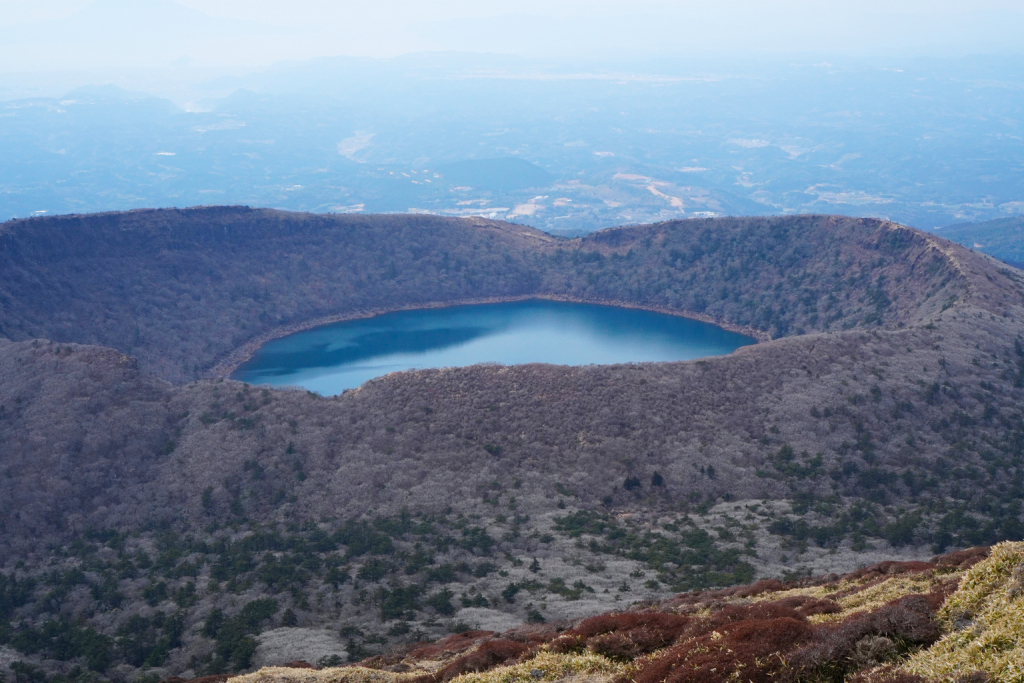In 2017 you might have found me at the top of Arthur’s Seat, Edinburgh’s adorable 251-meter-tall extinct volcano. If you had told me then that in five years’ time, I’d be up a 1,700-meter-tall active volcanic range, I wouldn’t have believed you. But you’ve seen the title — that’s exactly where I found myself this year, atop Karakunidake in Miyazaki Prefecture (that also extends to Kagoshima Prefecture).
By any standard, I’m a novice hiker. I’ve climbed Mount Tsukuba a few times, but overall, I’d only been up a total of four (now five) mountains in my life. So, as I was packing for a trip to Miyazaki with my fiancé and his family, my eyes went wide with concern when he mentioned Mount Kirishima.
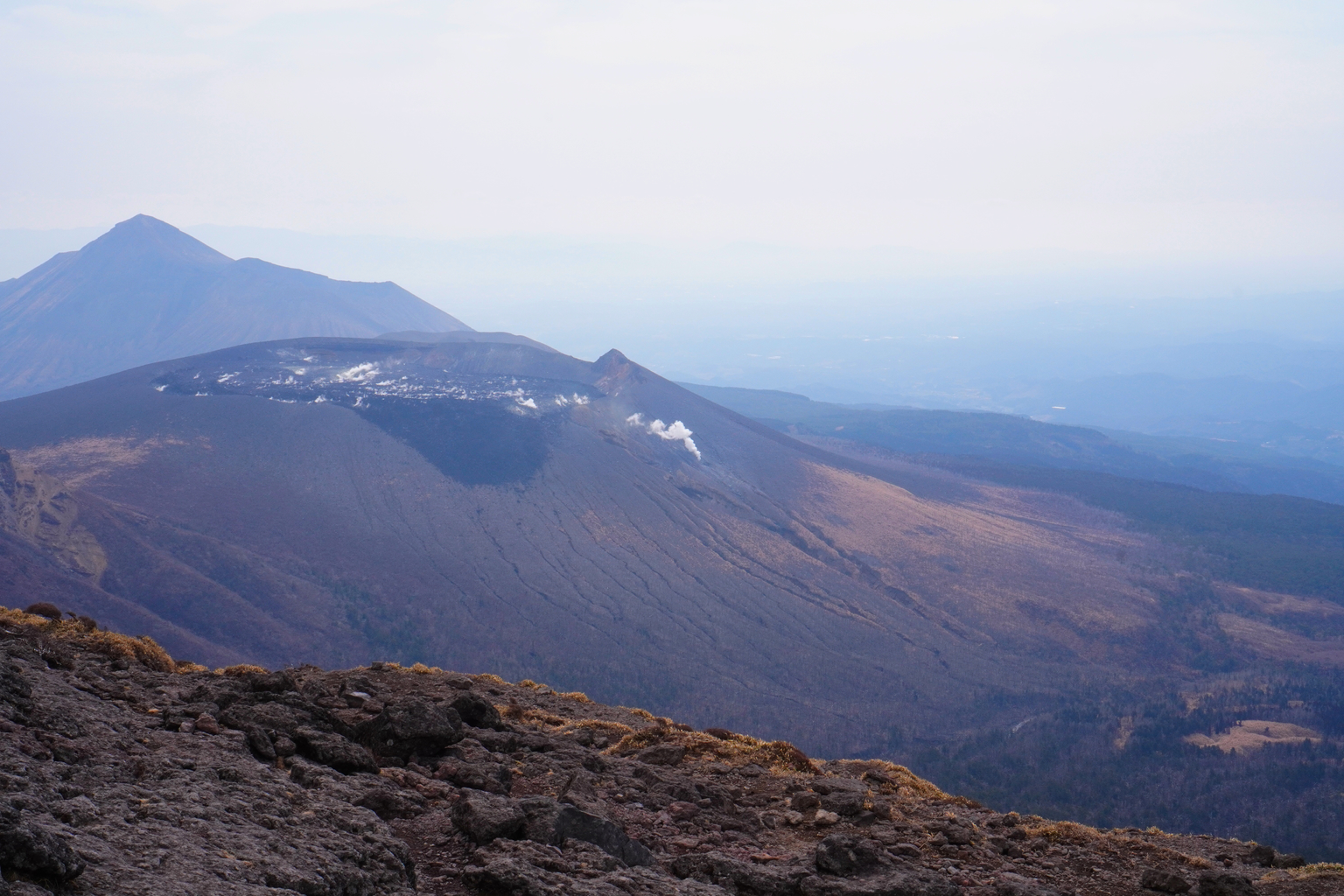
Mount Kirishima is one of the first things I came across when looking up things to do in Miyazaki. It lies between the border of Miyazaki and Kagoshima prefectures, and is an enormous volcanic mountain range, despite often being referred to only as Mount Kirishima. This made me imagine grueling, day-long hikes in between craters blasting smoke left and right.
But it turned out the plan was to hike Karakunidake, a small part of that range, with a confusing kanji name which is the same for South Korea “韓国” (kankoku). Karakunidake is a much easier hike that usually takes only three hours and is suitable for beginners like myself.
We arrived by car at the Ebi Eco Museum Center car park and were greeted by an early-March chill. The sky was hazy, with hints of blue here and there, perfect hiking weather. We found the small wooden sign pointing towards Karakunidake and that’s where our hike began.
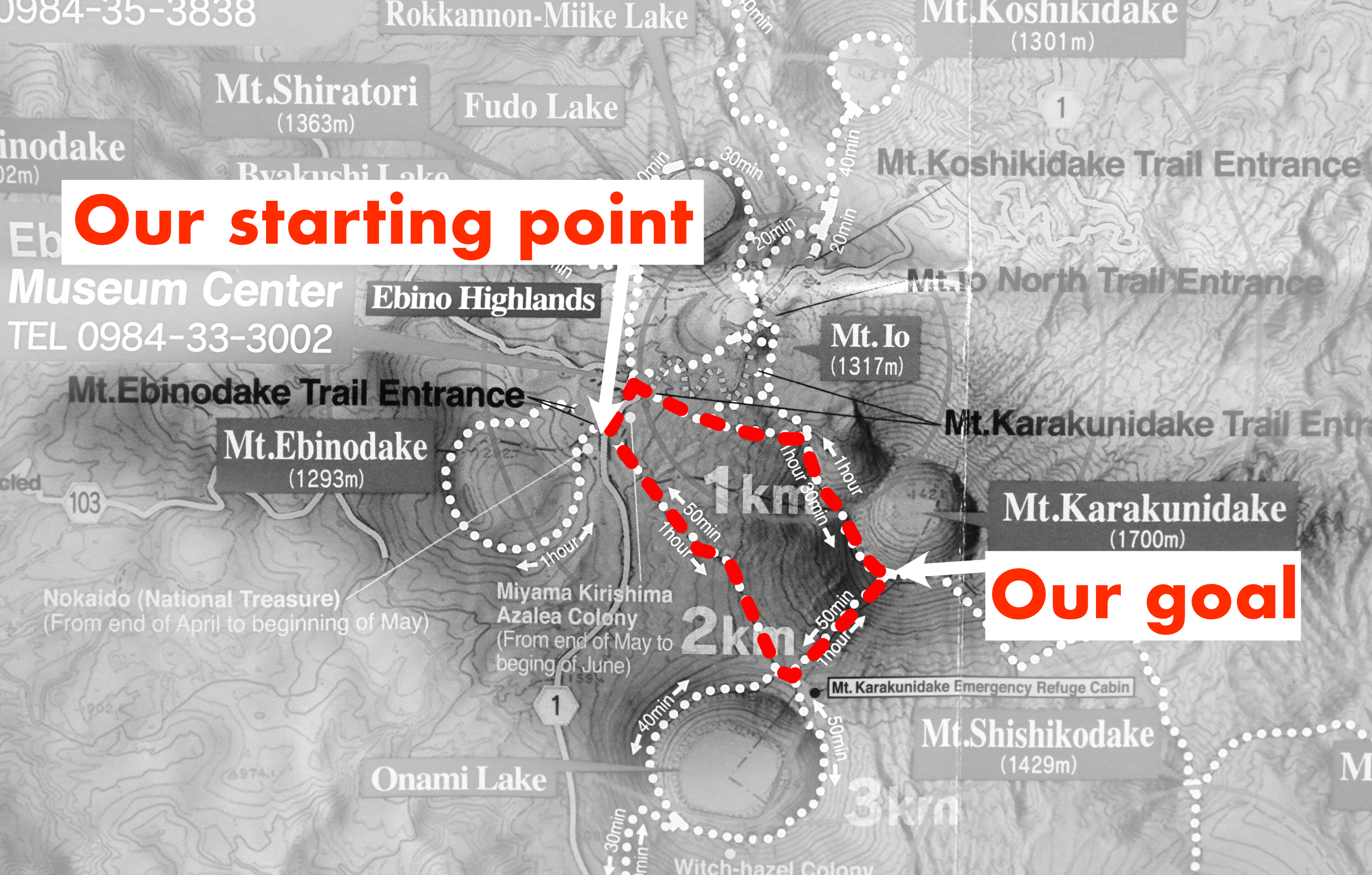
Highlights on the Way Up
What started out as a well-paved asphalt path quickly devolved into a dirt trail of roots and undergrowth, marked out by a thin rope. Soon we came across frosty surroundings and a wintery crunch of the ground underfoot.
As I cautiously stepped on the first few patches of icy ground, I looked down and saw what appeared to be pieces of glass, or crystal. This is called “himo bashira” meaning “needle ice.” When water running through soil above zero degrees Celsius meets air below zero degrees Celsius, it forms these beautiful crystalline structures.
Once we were making a steady pace up the mountain, we smelled a hint of sulfur. If you’ve spent any time near natural onsen, it’s a smell you’ll be very familiar with. Sure enough, we soon saw wafts of white clouds peeking through the trees, too.
We came to a viewpoint and saw the origin of the white smoke; the aptly named Mount Io (‘io’ in Japanese means sulfur). We stopped for a moment to admire the view, then continued onwards and upwards. The incline was steady, but not overwhelming. As we went up, we came clear of the trees and the roots and underbrush were slowly replaced by dark rocks.
We even spotted some deer tracks in the mud, but no luck seeing the animals who left them.
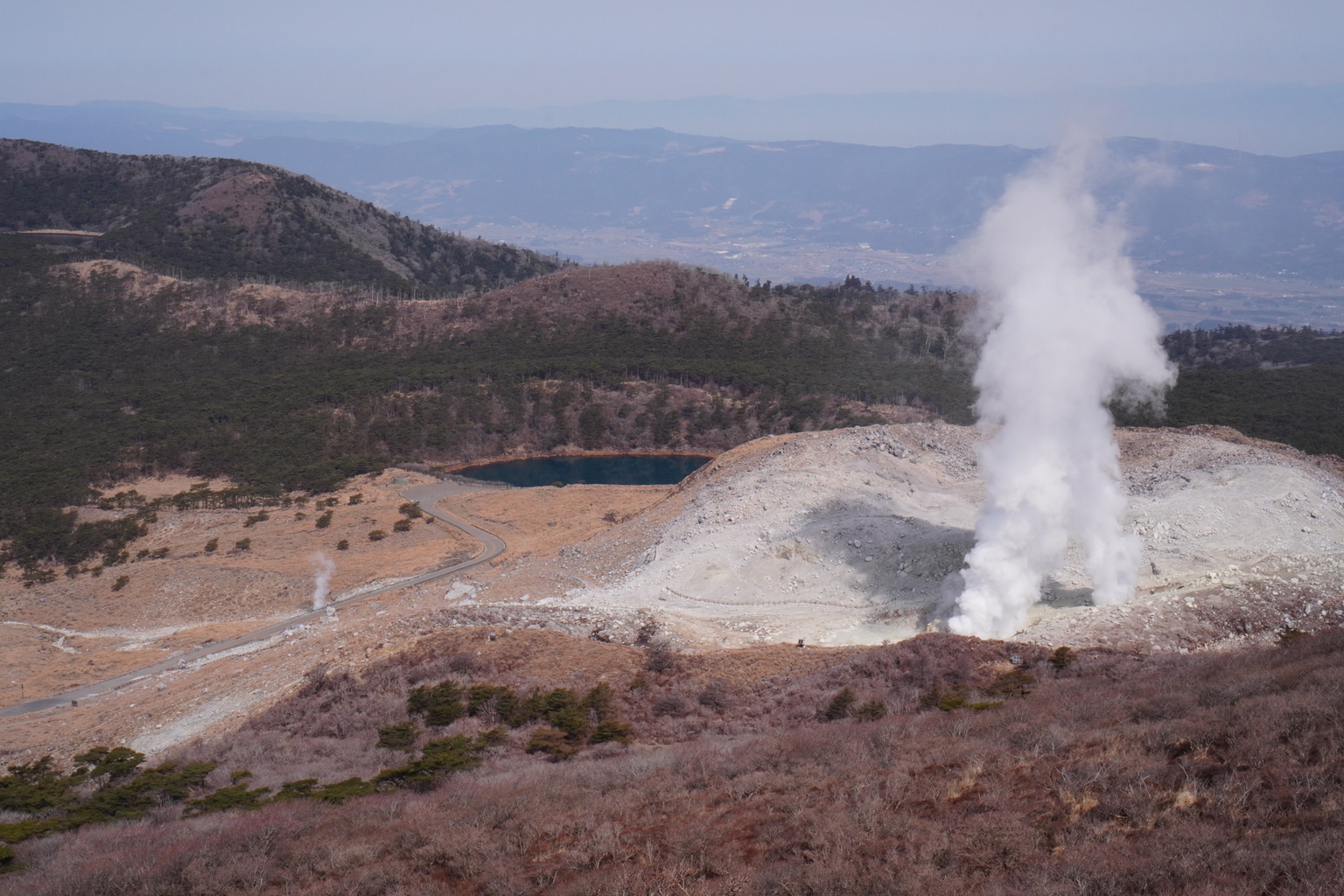
View from the Top
The rocks underfoot got darker the higher we went, until we were met by a mound of coarse black sand, the final path to the top. The view from the top is a reward worth all of the effort.
I could see tendrils of steam rising from Shinmoedake, like a hundred candles that had just been extinguished. Straight ahead I could see the deep blues of Onami Lake, the highest crater lake in Japan, its blue hues looking almost unreal.
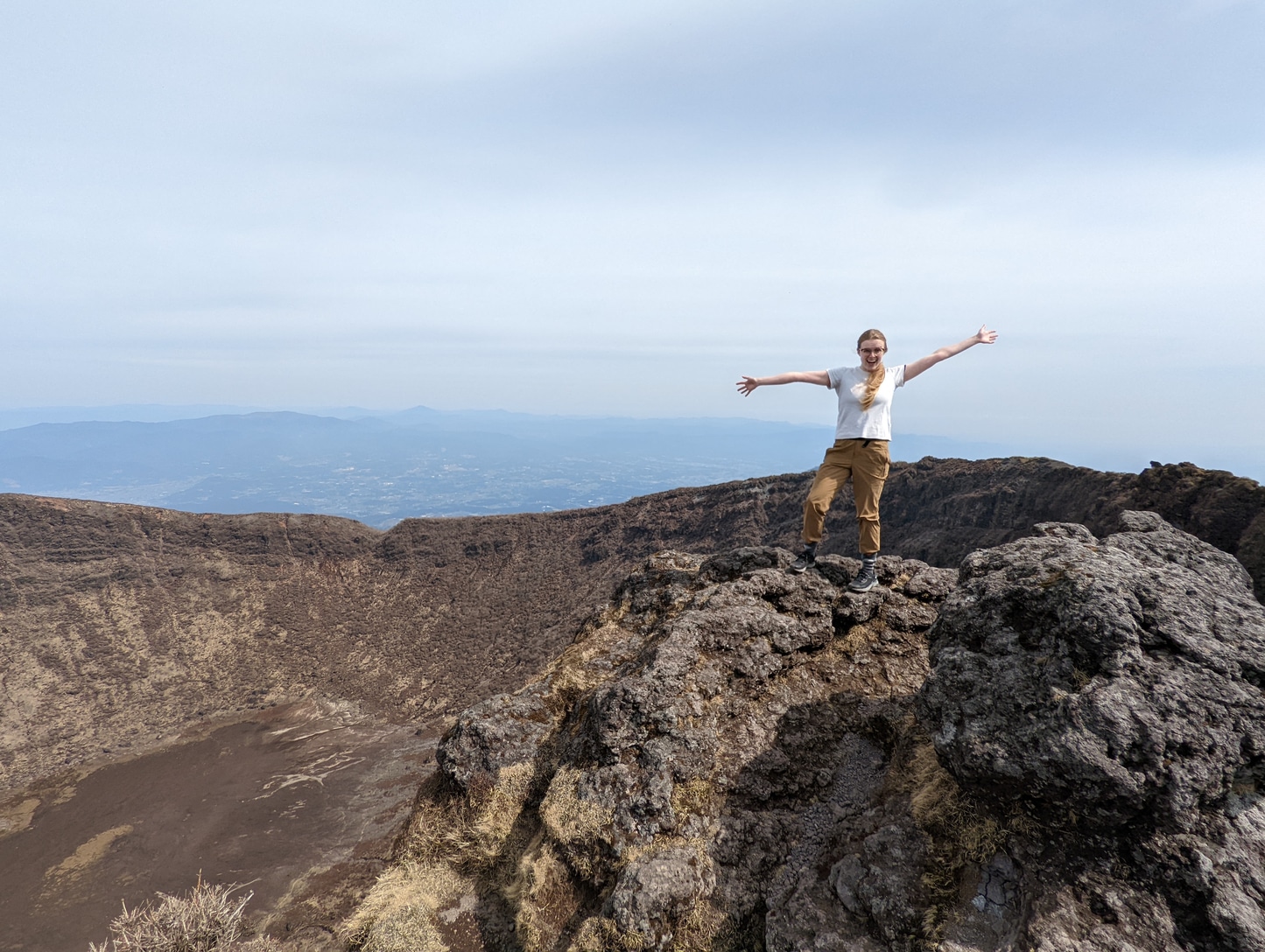
A Treacherous Descent
We chose to follow a different route down. The rocks very quickly turned from a charcoal color to a faded pink, reminding us of their volcanic origins. What I wasn’t expecting, however, was the winding set of wobbly wooden steps. The steps suddenly came to a halt, a jagged end floating precariously above a sheer (albeit very short) drop. Even the more experienced hikers among us were unnerved.
The stairs stopped and started as they pleased and couldn’t decide whether they were there to help us or thwart us, at one point turning into an obstacle course. But we weren’t thwarted and though our descent was challenging, it wasn’t too tiring. On our way down we even managed to take a brief detour to see Onami Lake up close.

We finally got to the end of our hike, coming out onto the road. We had been looking forward to the footbath at the rest area and made our way towards it. But after dipping our fingers in it and finding it to be tepid at best, we decided against it.
Overall, I felt I’d accomplished something at the end of the hike. We also got to see some amazing sights. Although I wouldn’t recommend this if you don’t regularly exercise or it’s your very first hike, I would certainly recommend it to anyone physically fit who is looking for an adventure and to level up a little from the local Mount Takao hike.

